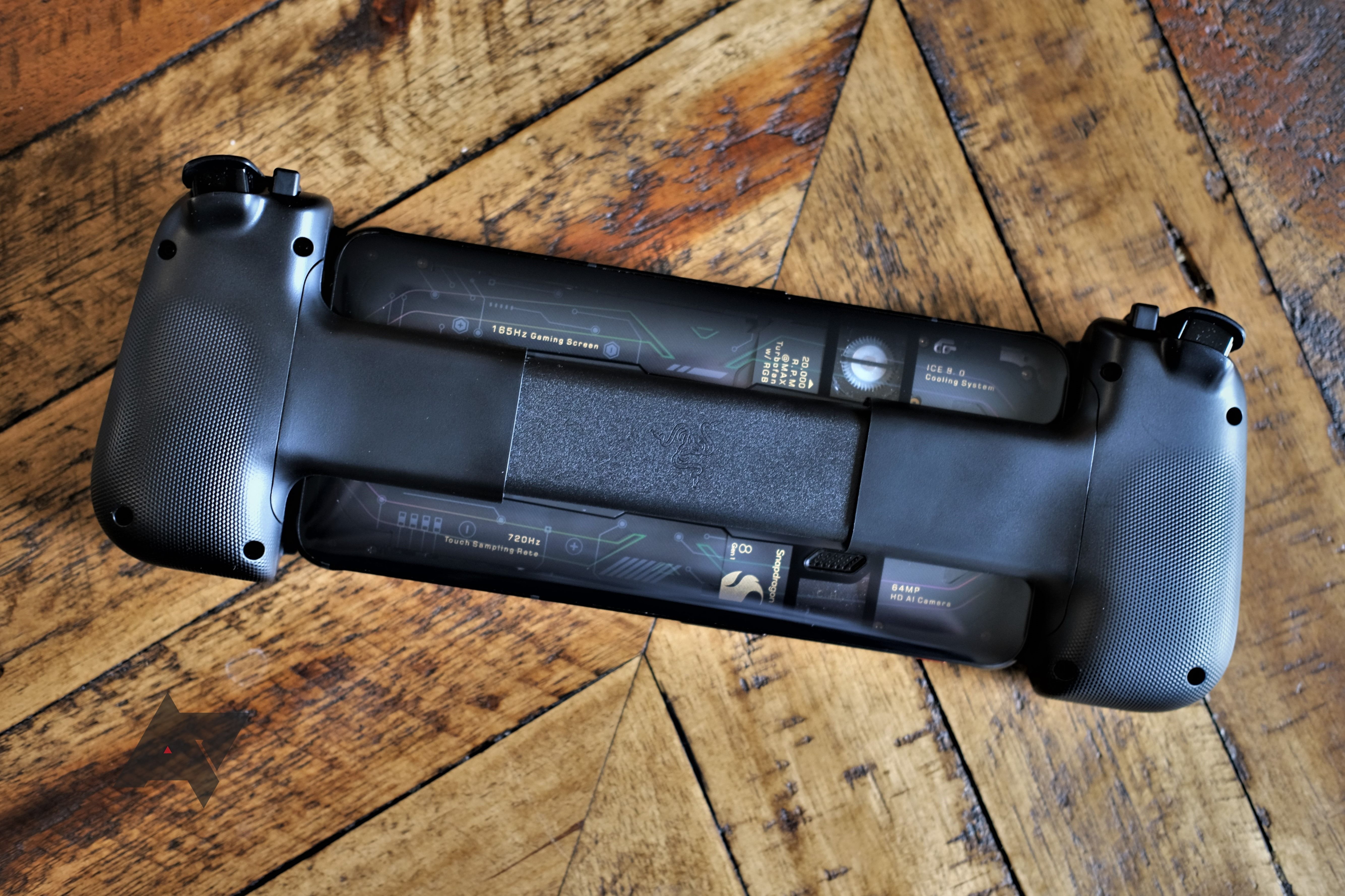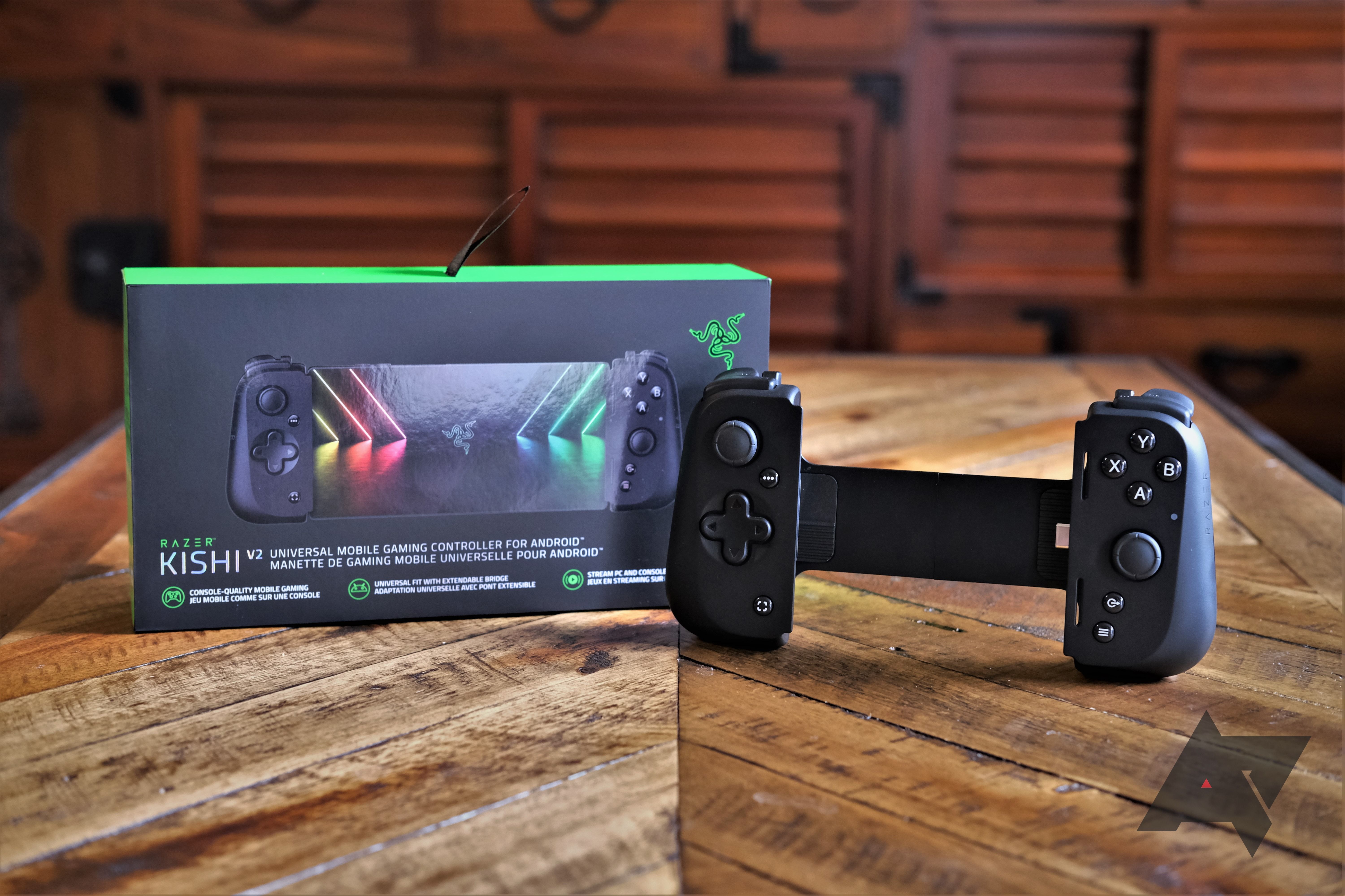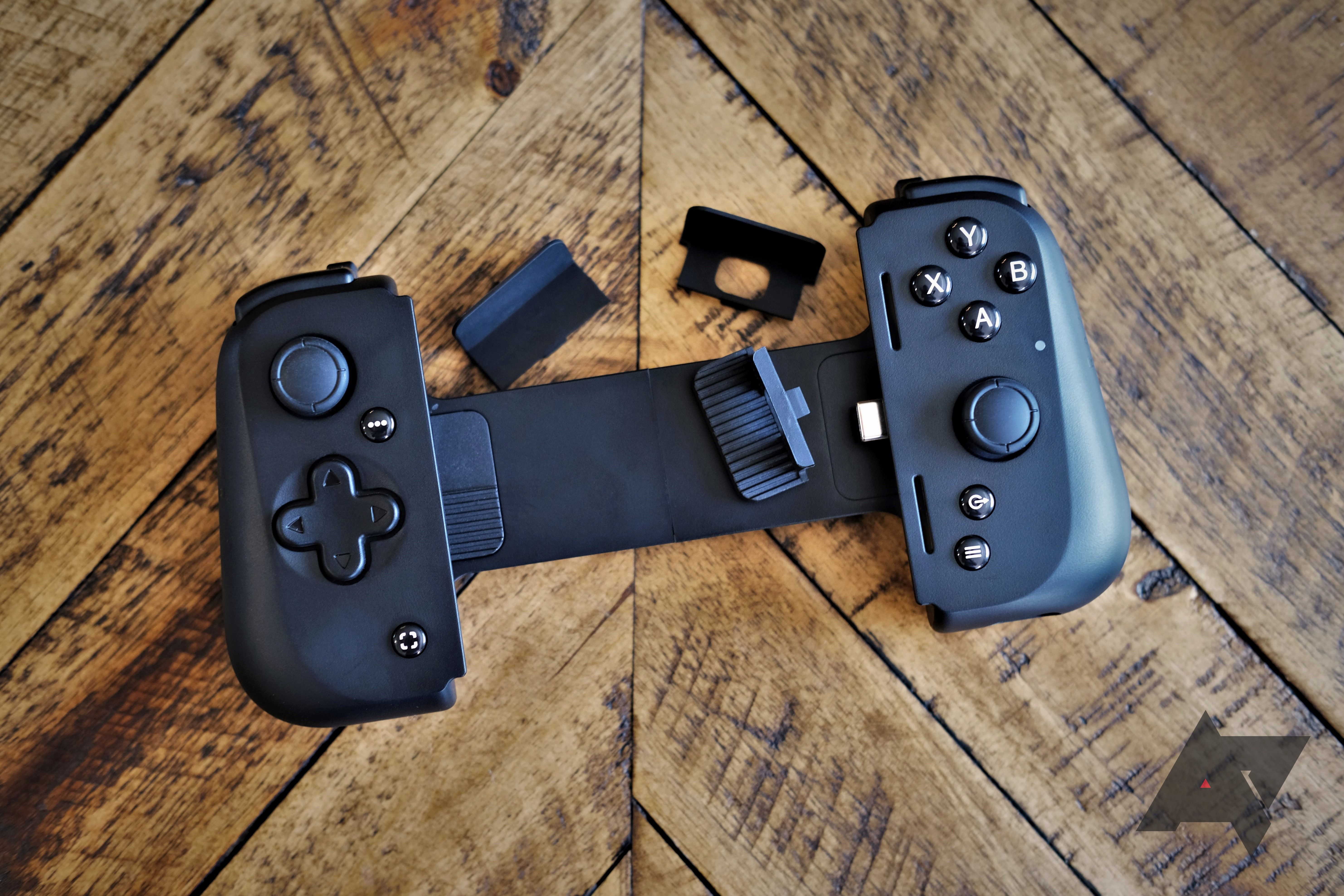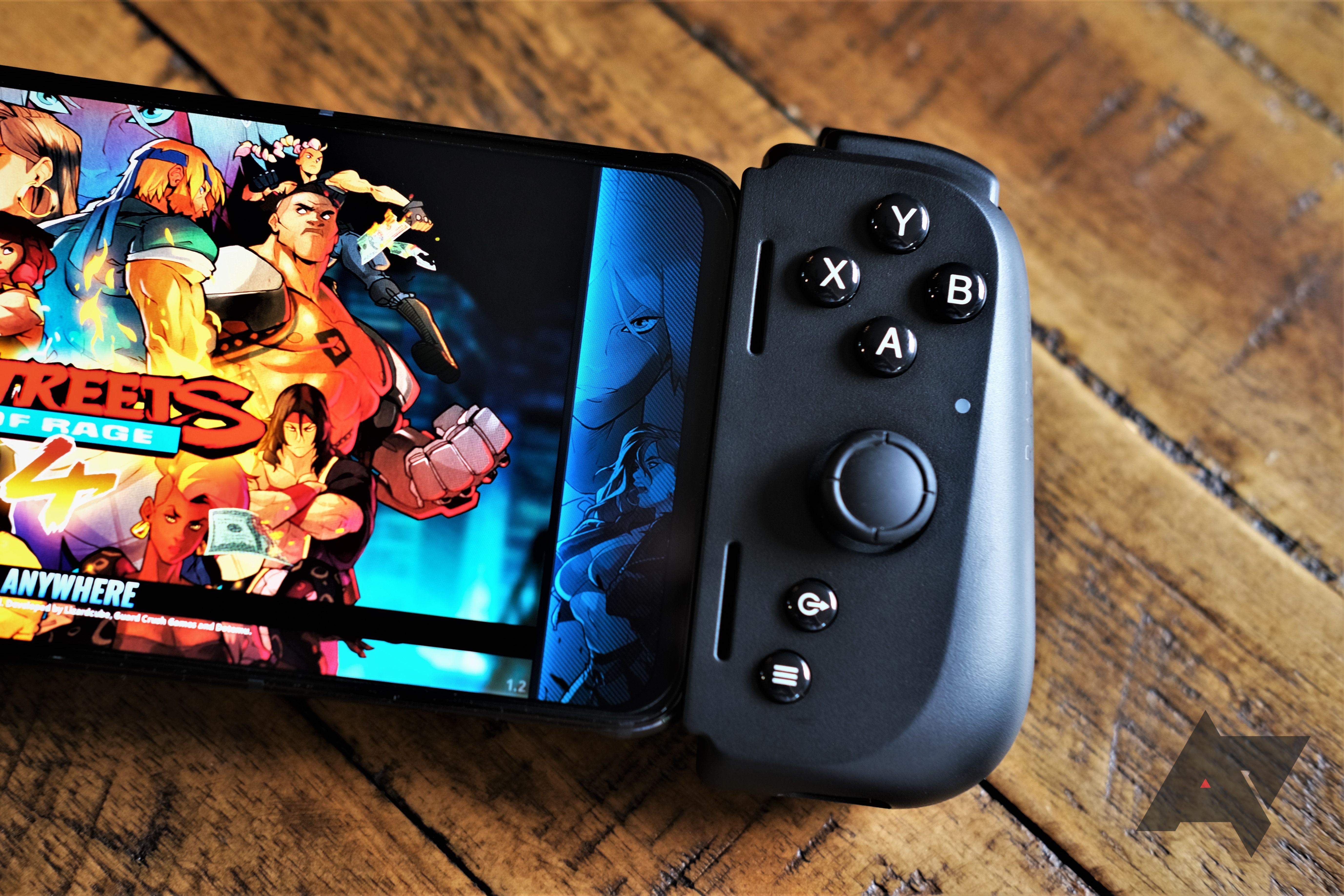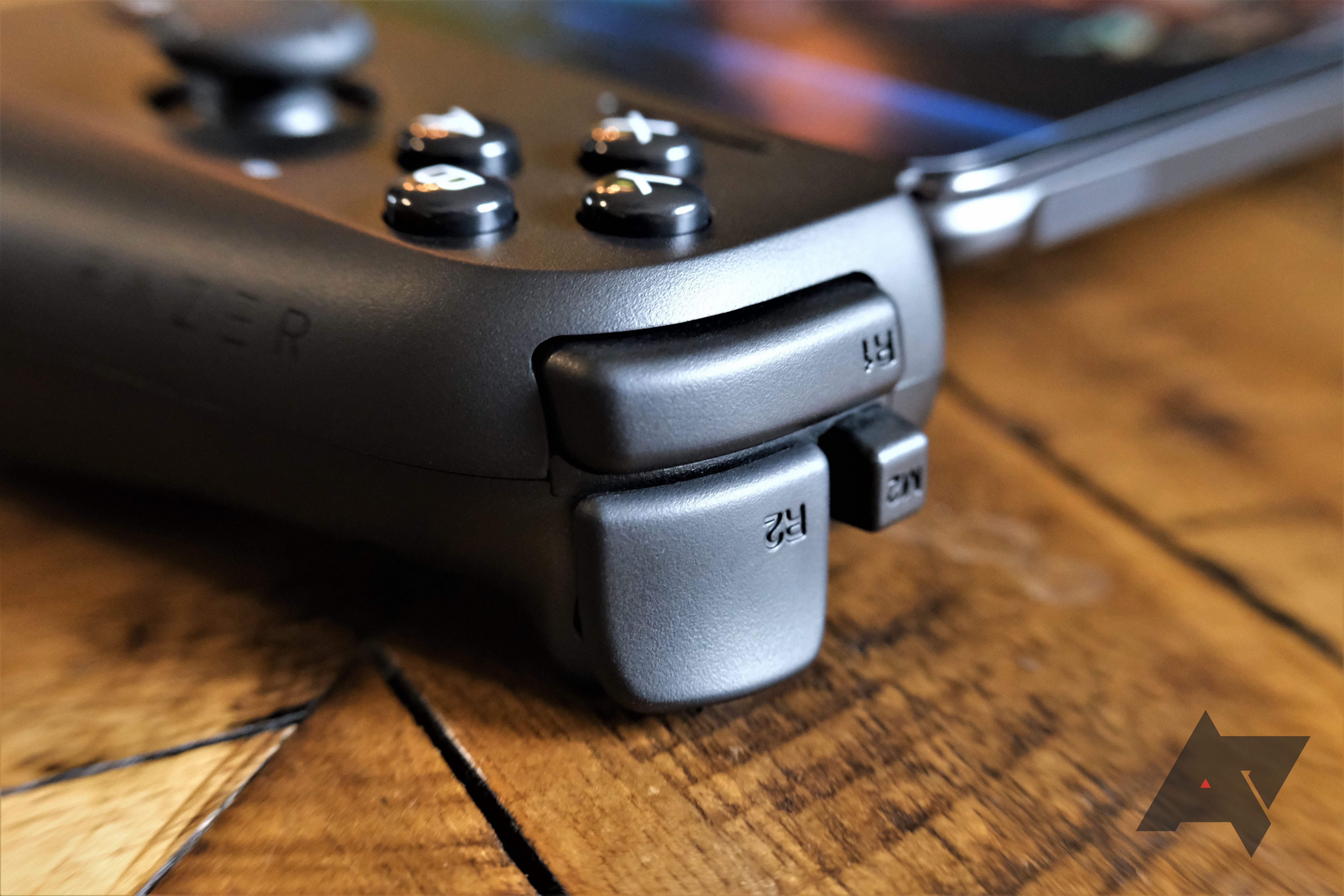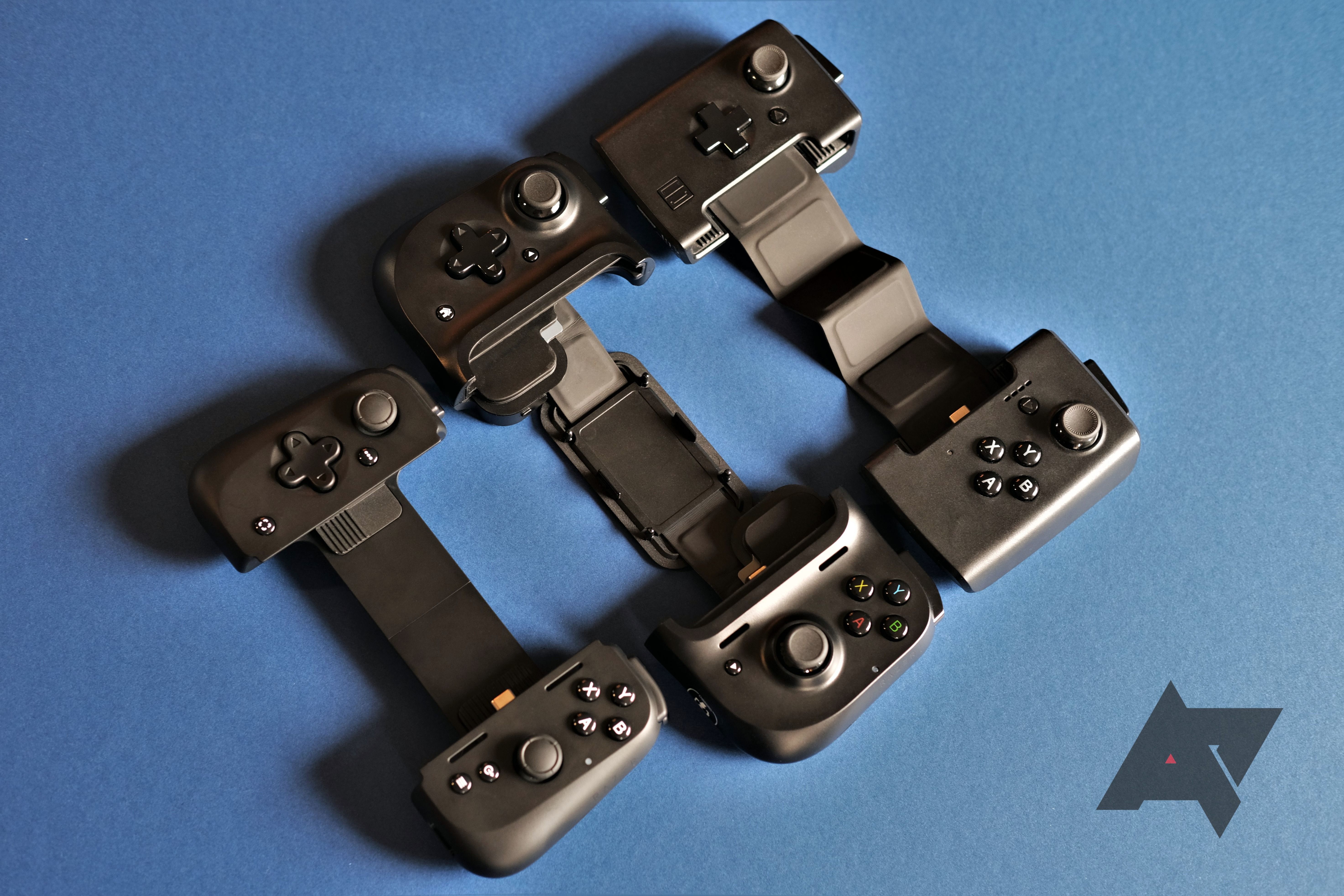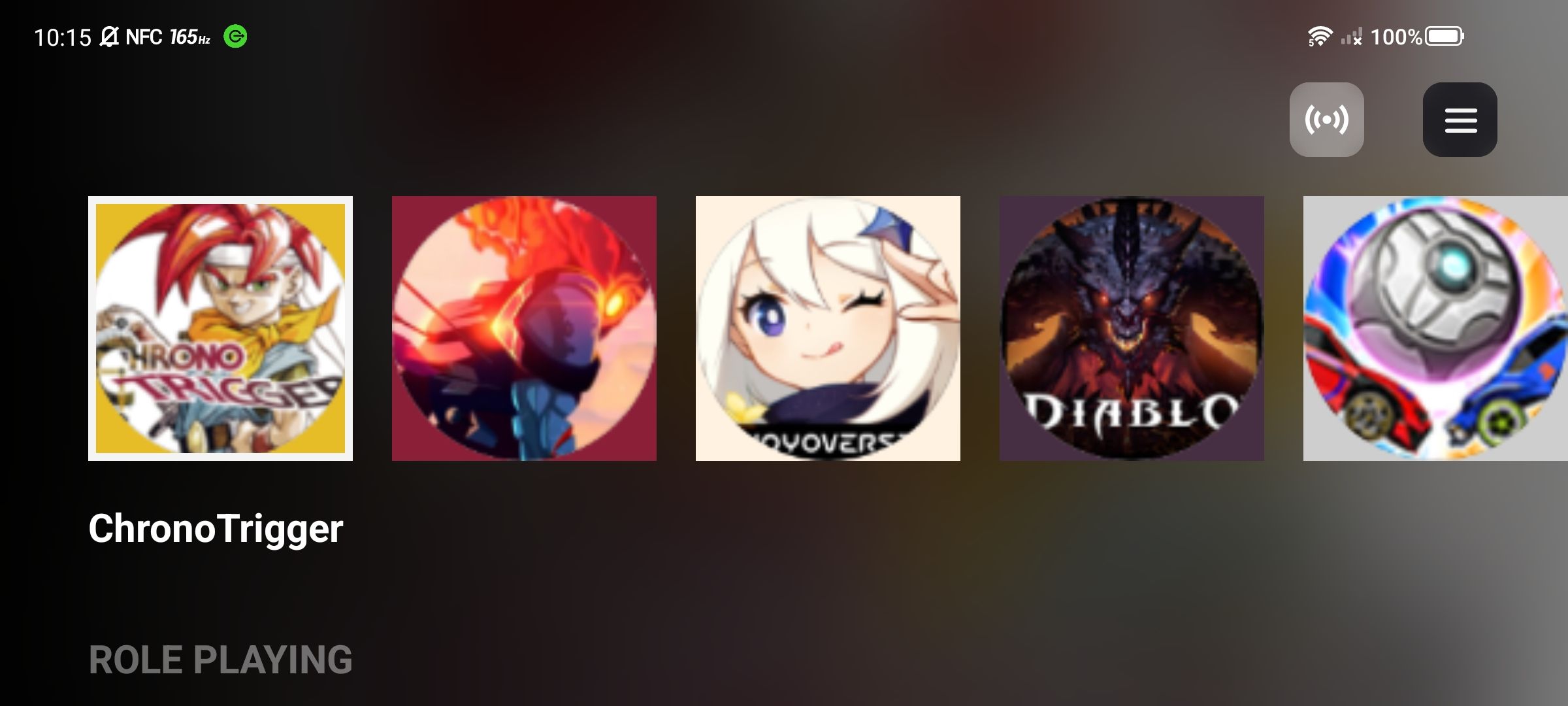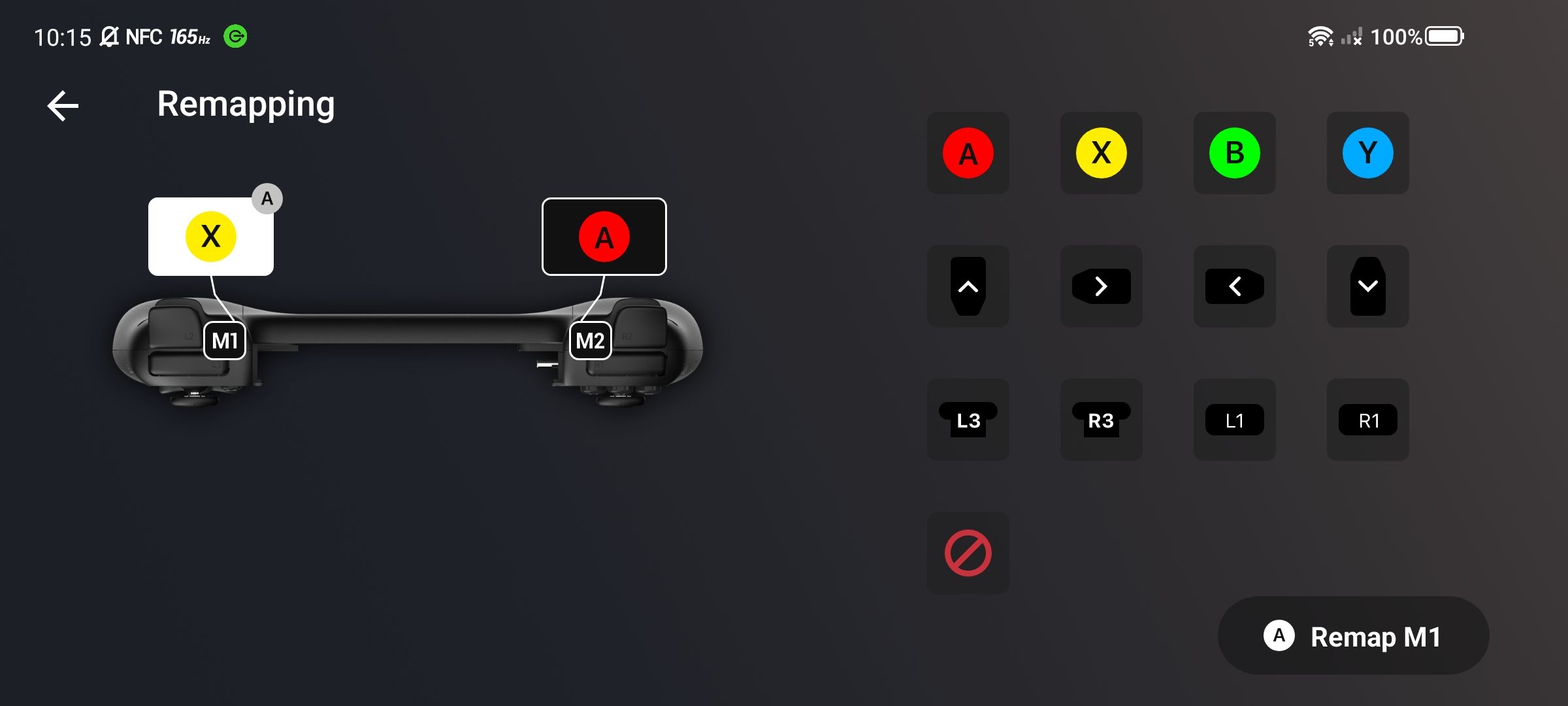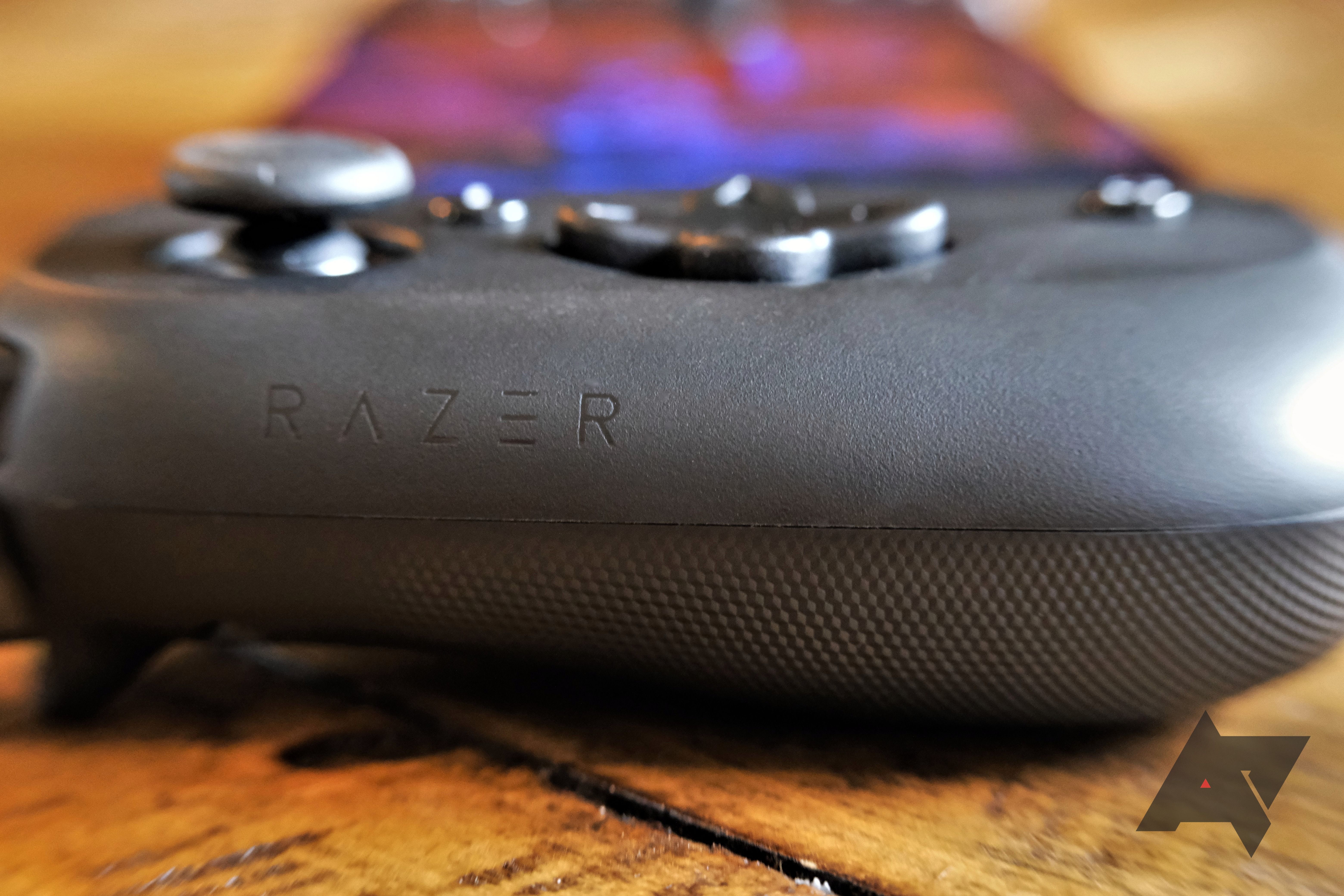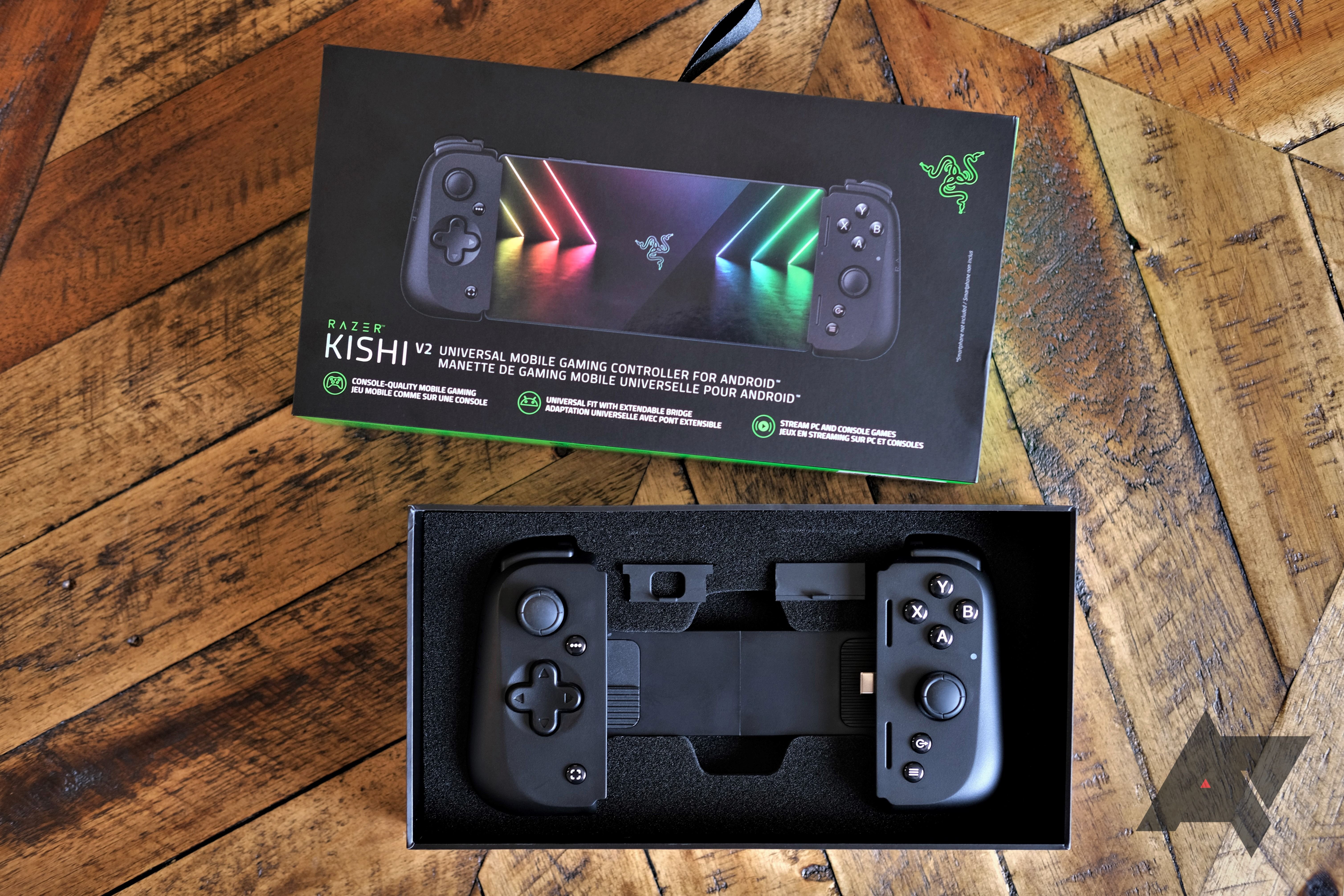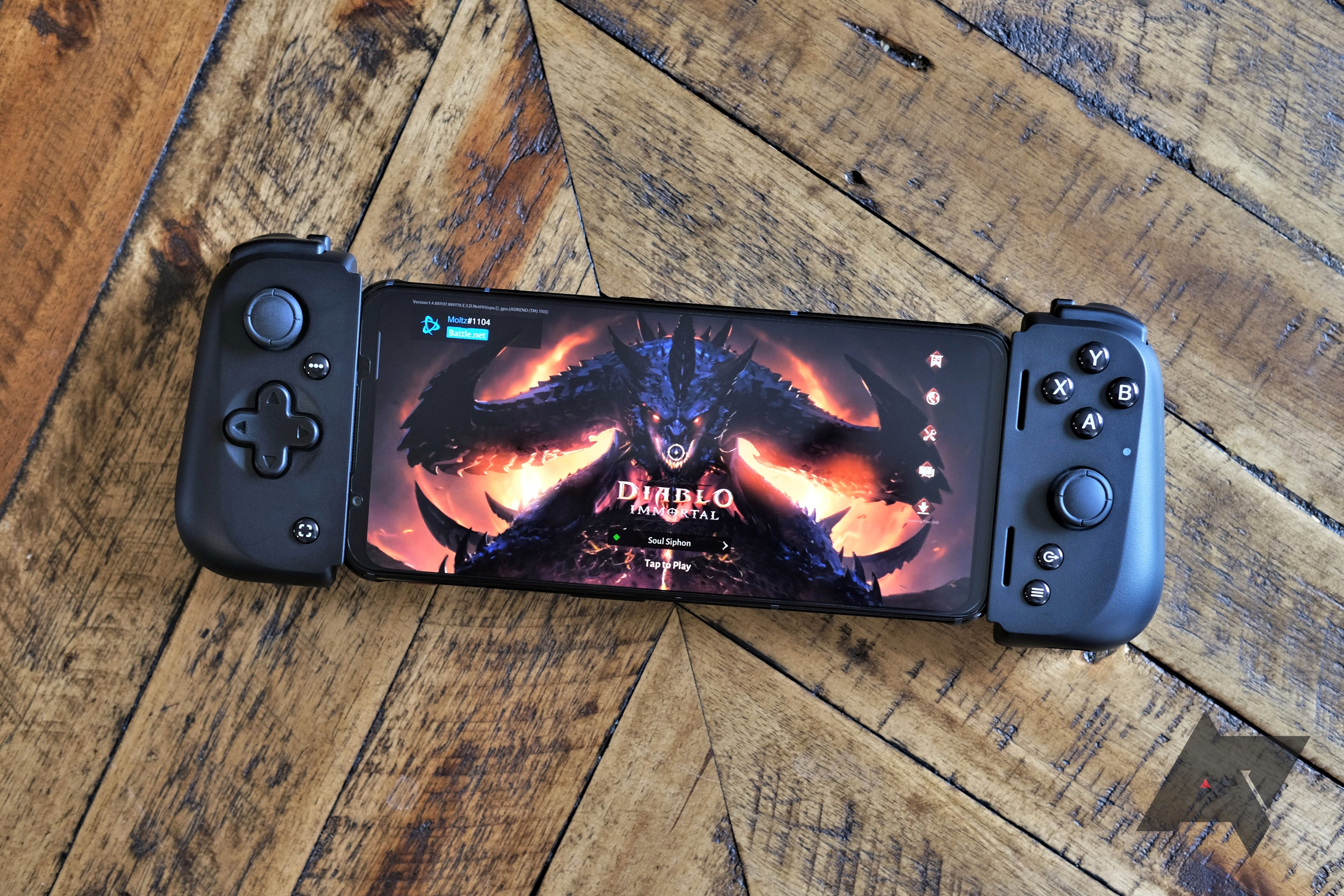Razer hit the ground running back in 2020 with a slick mobile controller designed in partnership with Gamevice, known as the Razer Kishi. It's been two years since its release, and it was growing a little long in the tooth thanks to a size limitation inherent to the design where large phones and large camera bumps didn't fit.
Razer has gone back to the drawing board for its second iteration, borrowing heavily from the iOS's Backbone controller (soon coming to Android), ditching the folding design of the original Kishi, and opting for an expandable bridge design that's a little less pocketable, but much more friendly to large phones. This isn't the only improvement either, as Razer has ditched its membrane buttons for micro switches. Of course, these changes come at a cost, and so the Razer Kishi V2 retails for $100. This means if you're looking to get in on the latest and greatest mobile controller to hit the market (our current premium pick in our controller buyer's guide), you're going to have to pony up the funds.
Razer Kishi V2
The Razer Kishi V2 is the newest mobile gaming controller from the company, offering a new design that fits larger phones, with micro switches replacing the previous controller's membranes. The Razer Kishi V2 is a premium controller for Android, with a price to match at $100.
- Brand: Razer
- Platform: Android, Windows
- Battery: No
- Connectivity: USB-C
- Headset Support: Yes
- Programmable: Yes
- Extra Buttons: Yes (two extra)
- Colors: Black
- Weight: 123 g
- Wired/Wireless: Wired
- Light and portable
- Micro switches for all buttons
- Passthrough charging
- Removable pads to fit an assortment of devices
- Expensive
- Plastic casing feels cheap
- Less portable than the previous model
Design
The Razer Kishi 2 looks a heck of a lot like the Backbone One for iPhone, thanks to a similar extendable bridge that allows each device to slide out to fit large phones. Inspiration was clearly taken, and it has resulted in an excellent design that fits a wide range of smartphones. Seeing that this was the weakest point of the Kishi V1, the new sliding bridge is a welcome improvement. This does mean the Kishi V2 is less pocketable, as it is wider than the V1 when folded, a downside to the new bridge, but seeing that many more phones can be used with the V2, this is a worthwhile tradeoff.
Overall, the Kishi V2 looks very similar to the Backbone One, with tapered ends that start out thinner at the top, bulging out slightly towards the bottom. This allows for a comfortable grip in hand. There's also a slight texture on the rear so that you can easily grip the controller.
You get the typical face buttons one would expect from any gaming controller (in an Xbox layout), and each button contains its own micro switch, including all four directions on the d-pad (yes, I tested the d-pad with a few fighting games, it works great). Even the left and right shoulder buttons contain switches, and the triggers are analog, perfect for racing games when you need to dial in your speed. You even get two extra buttons on the inner right and left of the shoulder buttons, and they are programmable, but you will need to use Razer's new Nexus app to program them.
Of course, the Kishi 2 offers a USB-C connection on the right side of the controller, just like the V1, but unlike the V1 that needed to be modded to remove its rubber pads to fit larger phones, Razer has built-in removable pads to ensure thick and thin phones can fit the V2, no matter if they are in a case, or sport a gigantic camera bump (looking at you Pixel 6). All supported phones will require a centered USB-C port (leaving out the likes of the off-center ROG 5), and the USB-C in the controller is static, so sometimes sliding a phone into the controller can be tight, but so far, everything I've thrown at it will fit, including the large and in charge RedMagic 6.
So yes, the Razer borrowed heavily for the design of the Kishi V2. Still, Razer's experience as a peripheral manufacturer means the company has the resources to perfect popular designs, which is precisely what it did with the Kishi V2.
Feel
Overall, I enjoy the feel of the Kishi V2. It's incredibly light (4.48 ounces, to be exact, compared to 5.6 ounces for the V1), which may throw you off at first as it certainly does not immediately feel like a $100 controller. Once you slap a phone into the controller, this changes, as this adds weight, and so holding the Kishi V2 is comparable to holding a Switch Lite that's a bit thicker, but this thickness is good as you can grip the controller better than the flat Switch Lite. So the hand feel is good, where you can grip the controller comfortably for hours on end.
The button placement is also really good. I never once felt I couldn't reach a button or trigger comfortably, and thanks to the uneven layout of the analog sticks, if you enjoy Xbox controllers or the Nintendo Switch's layout, you'll have no trouble here.
Of course, the star of the show is Razer's move to micro switches for all buttons, and these feel great. They offer a good bit of tactility, with an audible click that's pretty satisfying. My only concern was how well the d-pad would work and whether or not I could still pull off the directional moves of a fighting game like Samurai Shodown. I have confirmed the micro switches do not impede the sweeping motions of special attacks like Genan's Poison Cloud Puff.
There is one caveat, the thumbsticks are now smaller, where they were comparable to the sticks in a PS or Xbox controller in the V1, but are now much closer to what the Nintendo Switch offers in the V2. This change limits the amount of rotation you get; though it's not like the sticks don't work, they simply offer less rotational movement. So if you're fine with the Switch's sticks, then you'll be good here too.
So as far as feel goes, Razer pulled out all the stops. Thanks to the micro-switches under each button, each click feels superb, and once you have the weight of a phone inside of the controller, it's easy to feel how the bottom flares and rounded corners allow for comfortable hand placement. Even the smaller thumbsticks lean into this design, as they are easy to reach and manipulate. Compared to the V1, the V2 is much more comfortable, beating the pants off bulkier controllers like the GameSir X2.
Performance
Since the Razer Kishi V2 doesn't offer any internal batteries, existing as a hard-wired controller that is powered over your phone's USB-C connection, its performance is superb. There's no latency here, and thanks to the new micro switches, everything feels tactile and exact. So from a performance perspective, the Kishi V2 delivers.
The move to smaller thumbsticks may be the only impedance on performance, where you have much less play for stick movement compared to the larger sticks in the V1, though the dead zones for both seem comparable, so the only downside is the size of the thumbsticks, which doesn't appear to affect performance.
Software
Razer is pretty well known for forcing software on its customers on PC; the company has an evident penchant for tying software to its hardware, so unsurprisingly, it has created an app for the Kishi V2. It's called Razer Nexus, and the app basically serves duty as a game launcher. A convenient place to launch your games that also offers a categorized list of supported titles should you want to go looking for more games to play.
Razer Nexus is still a work in progress, but it already supports Facebook and YouTube streaming, and you can remap your controller's buttons through the app as well, and it's necessary if you wish to use the two extra buttons on the sides of the controller's triggers. Unlike Backbone on iOS, there is no optional subscription, Razer Nexus is completely free to use, and if you don't want to use it, you have that option; you'll simply miss out on the controller's programmable buttons.
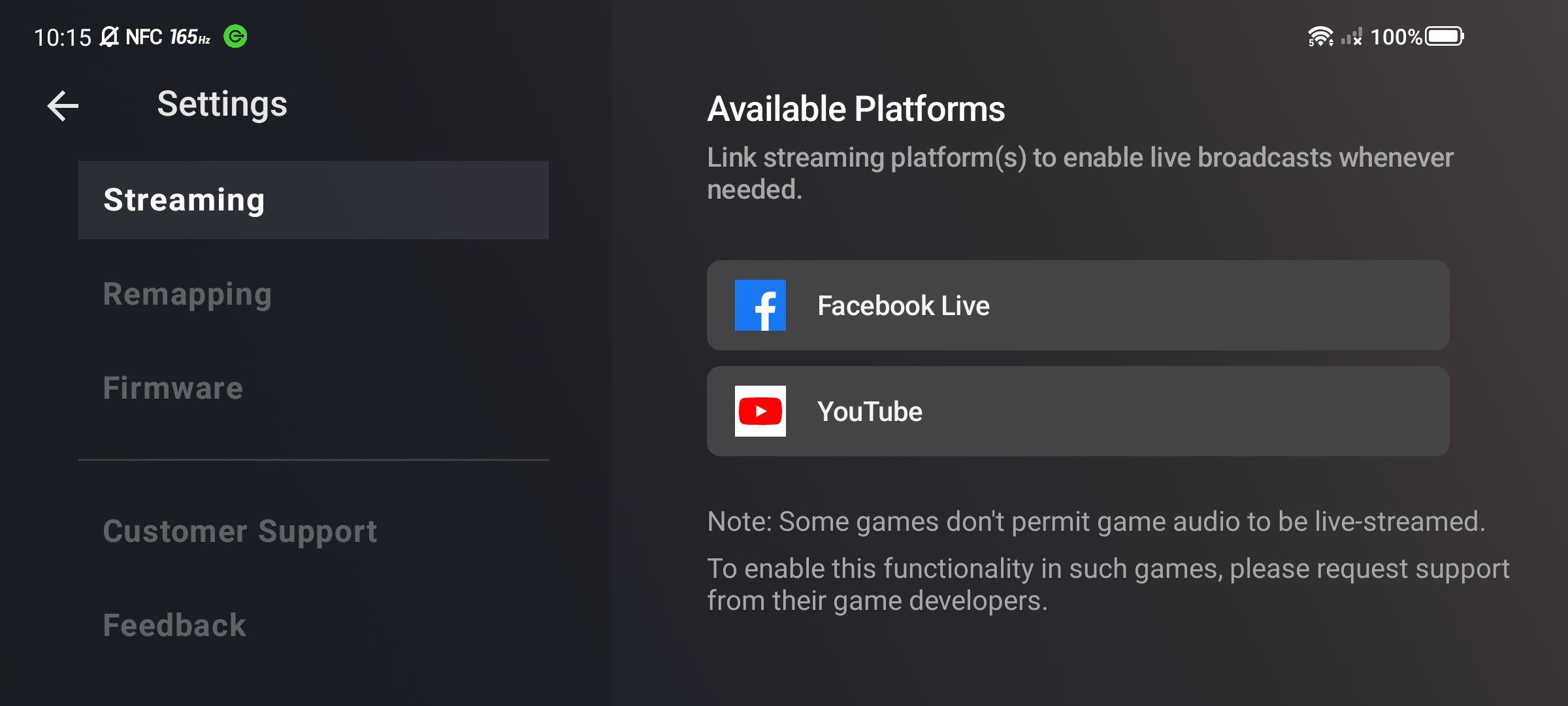
-1.jpg)
Price
The Razer Kishi V2 isn't cheap at $100. This is even ten dollars more than what the V1 retailed for, though the move to micro switches surely explains the added cost. This means the Kishi V2 is more expensive than an Xbox or PlayStation controller and is much more expensive than the competition, as Gamevice recently launched what is basically a rebranded Kishi V1 for $60. Even the GameSir X2 retails for less at $70.
Still, compared to the Kishi V1 and the GameSir X2, the Kishi V2 is clearly the newest generation of side-by-side controllers for Android, thanks to a small footprint, excellent build quality, and micro switches (granted, the GameSir X2 also contains micro switches). So even though the price is high, you get what you pay for, and from all of my testing, the Razer Kishi V2 is clearly at the top of the pack.
Should you buy it?
Yes, the $100 price tag will be tough to swallow for some, but this is an incredible controller for Android all the same. There are Android controllers that retail for less, and then you have your choice of console controllers that are much more versatile since they work with other operating systems beyond Android. Then again, if you're an avid gamer on Android specifically, and you're on the hunt for something that's pretty dang portable that also offers low latency paired with the tactility you get from micro switches, the Razer Kishi V2 is an excellent choice and a shoo-in for our Most Wanted designation.
The Razer Kishi V2 has already shaped up to be my premium pick in my controller buyer's guide, and so I have no doubt that if you have the funds to splash out on a dedicated controller for Android, you'll be pleased with what the Kishi V2 has to offer. It feels great in hand, the buttons are responsive, there's low latency thanks to the USB-C connection, the whole thing is incredibly light, and it's still reasonably pocketable despite the expandable bridge. There's a lot to like here, plus you get a few programmable buttons and a free game launcher to program those buttons. The only real downside is the price, but at least you know you'll get a quality controller in exchange for your cash.
FAQ
Q: How does the Razer Kishi V2 compare to the GameSir X2?
The GameSir X2 is older than the Kishi V2, but it also offers micro switches for its buttons and comes at a price lower than the Kishi V2 ($70). However, the GameSir X2 is pretty bulky, so it's much less pocketable, though it does fit a wide range of devices thanks to its size. So if you're looking for something that's comparable to the Razer Kishi V2, but are also looking to save a few bucks, the GameSir X2 offers similar features, just in a larger footprint.
Q: How does the Razer Kishi V2 compare to the Gamevice for Android?
Gamevice used to be partnered with Razer, which is how the Kishi V1 came to life. Now that both companies have split ways, Gamevice is currently offering a rebranded Kishi V1 for $60, undercutting Razer's price, making for a great option if you're looking to get into a Kishi, but don't have the funds to splash out on a Kishi V2. So if you'd like to save $30 and don't mind using the last gen's tech, the Gamevice for Android is a great choice.

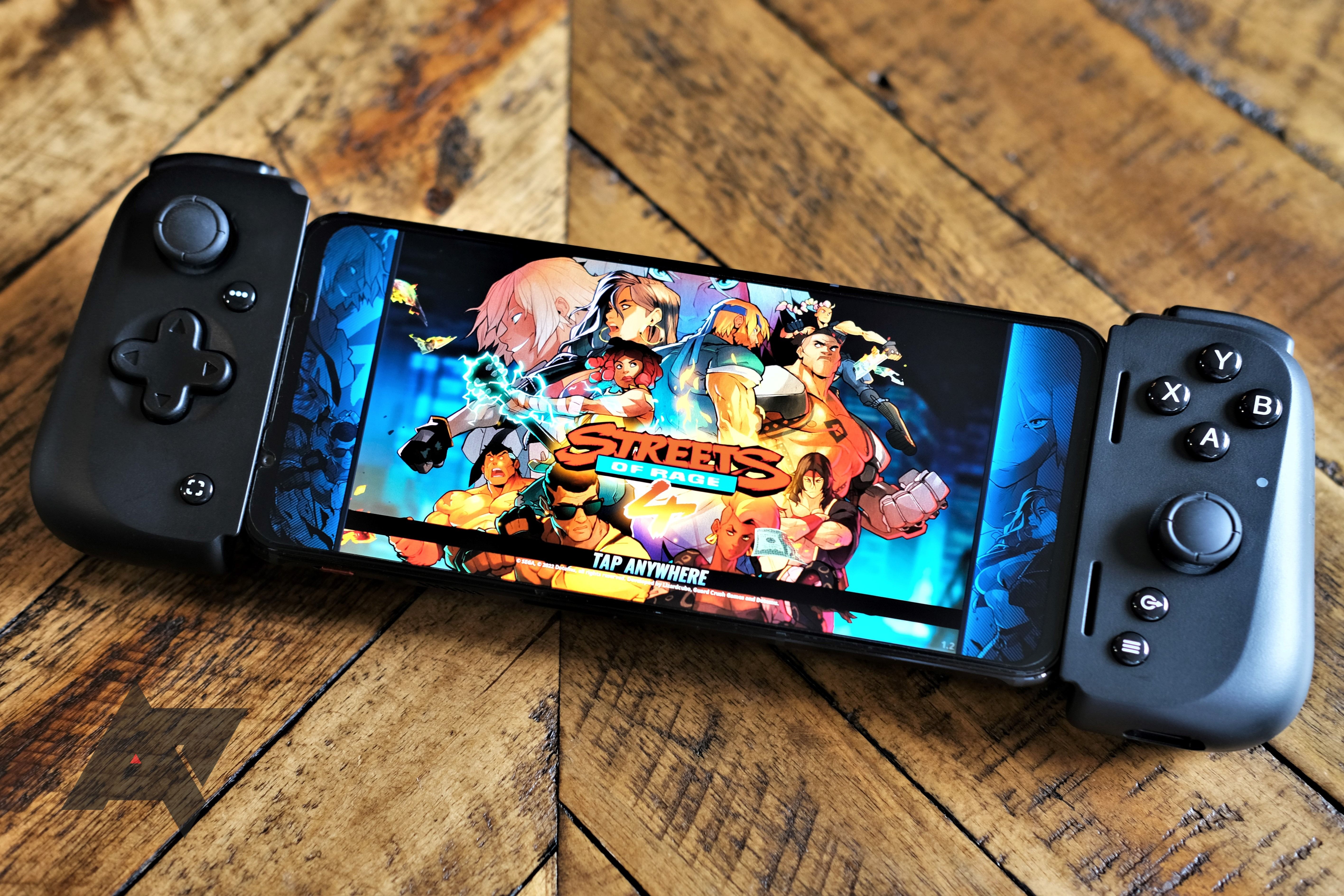
.jpg)
